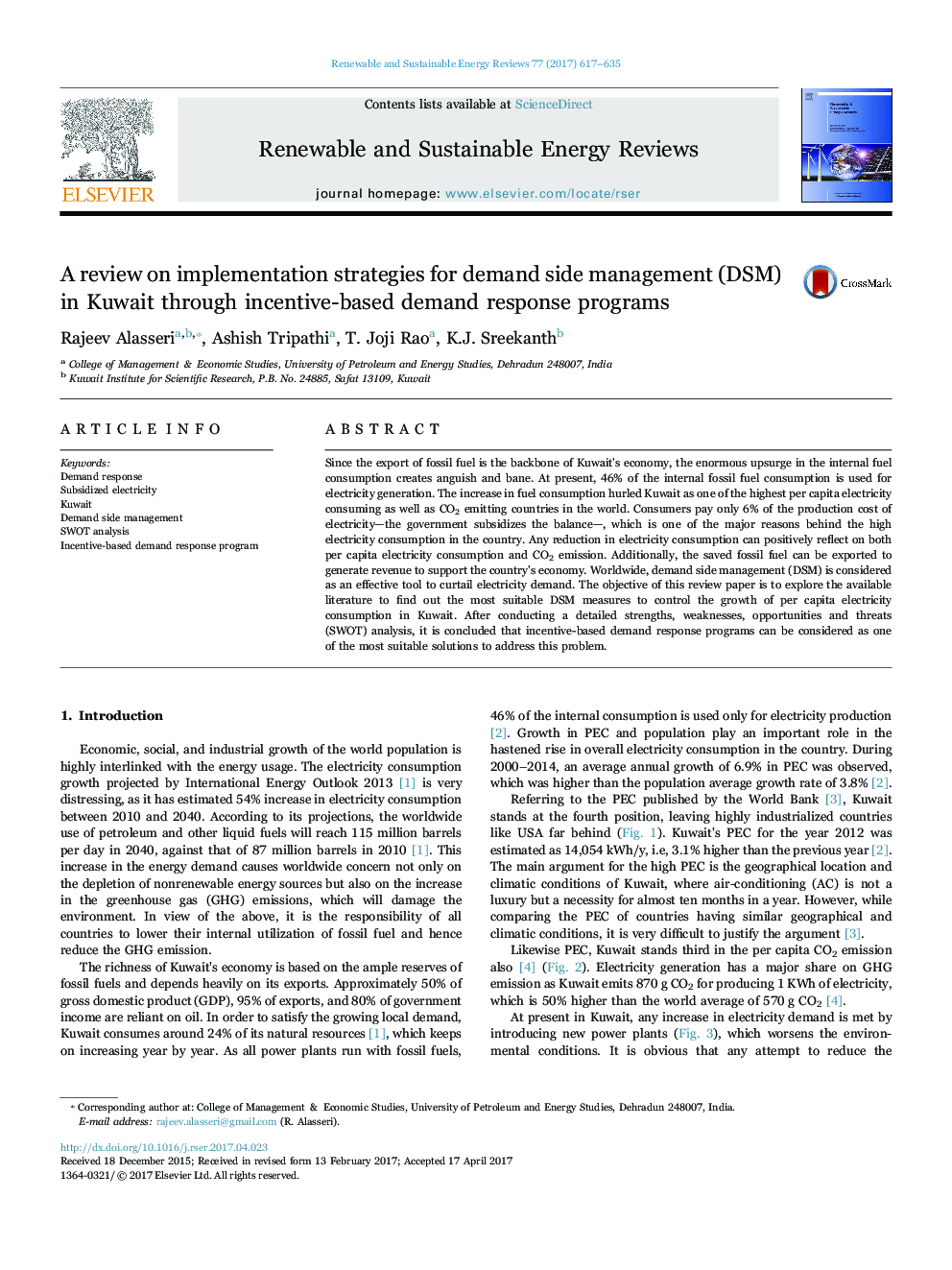| Article ID | Journal | Published Year | Pages | File Type |
|---|---|---|---|---|
| 5482966 | Renewable and Sustainable Energy Reviews | 2017 | 19 Pages |
Abstract
Since the export of fossil fuel is the backbone of Kuwait's economy, the enormous upsurge in the internal fuel consumption creates anguish and bane. At present, 46% of the internal fossil fuel consumption is used for electricity generation. The increase in fuel consumption hurled Kuwait as one of the highest per capita electricity consuming as well as CO2 emitting countries in the world. Consumers pay only 6% of the production cost of electricity-the government subsidizes the balance-, which is one of the major reasons behind the high electricity consumption in the country. Any reduction in electricity consumption can positively reflect on both per capita electricity consumption and CO2 emission. Additionally, the saved fossil fuel can be exported to generate revenue to support the country's economy. Worldwide, demand side management (DSM) is considered as an effective tool to curtail electricity demand. The objective of this review paper is to explore the available literature to find out the most suitable DSM measures to control the growth of per capita electricity consumption in Kuwait. After conducting a detailed strengths, weaknesses, opportunities and threats (SWOT) analysis, it is concluded that incentive-based demand response programs can be considered as one of the most suitable solutions to address this problem.
Related Topics
Physical Sciences and Engineering
Energy
Renewable Energy, Sustainability and the Environment
Authors
Rajeev Alasseri, Ashish Tripathi, T. Joji Rao, K.J. Sreekanth,
